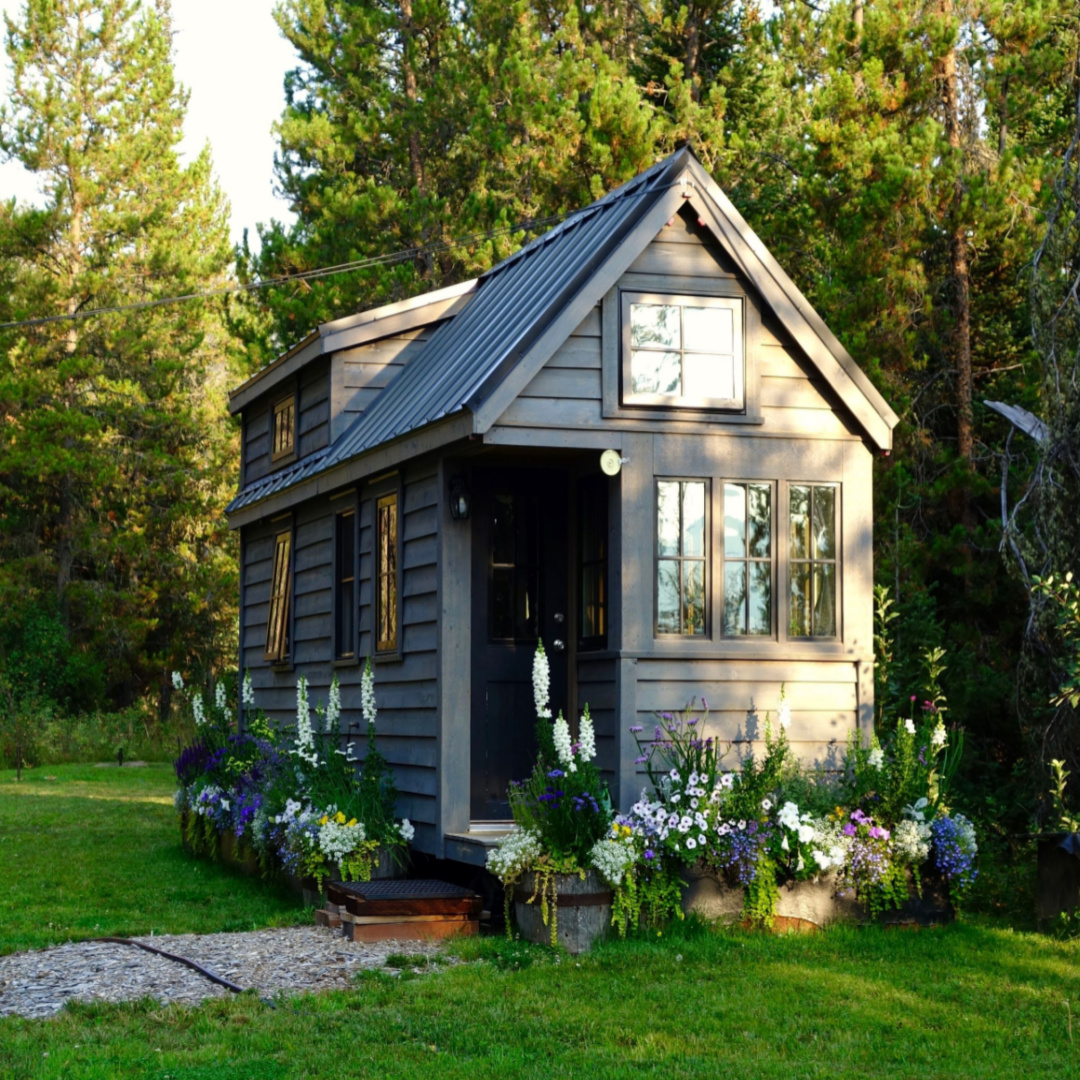Tiny homes have been around forever, but their popularity has truly exploded since the 2008 housing market crash.1 Though the market has had many ups and downs since then, and tiny homes have remained a go-to choice for those who are interested in minimalism, travel, and sustainable living.
There are several ways that tiny homes allow their inhabitants to reduce their environmental footprints, including reduced energy consumption and water waste compared to standard homes. But as we’ll discuss in this article, many sustainable home improvements can make your tiny home even more environmentally friendly — and cost-effective.
7 Eco-Friendly Upgrades For Your Tiny Home
Here are our top tips to make your tiny home more sustainable:
1. Install a Skylight
Installing a skylight is a game-changer for tiny home living. In most cases, having a skylight will completely eliminate the need for artificial lighting during the day. Besides bringing in wonderful natural light, skylights that open can also be useful for regulating the temperature of your tiny home. Because hot air rises, having a vent on your roof sends all that heat right outside, making your tiny space much cooler without using any additional energy.
Skylights can be tricky to install, but most window installation companies will be able to get the job done if you don’t feel confident tackling it on your own.
2. Get Energy Star Windows
If your windows are made out of traditional materials, you could be losing 25-30% of your heat or air conditioning.2 That’s bad news for your comfort, your wallet, and the environment.
Installing Energy Star-certified windows is the best way to protect both air leakage and energy loss in your tiny home. An Energy Star certification means the windows are certified energy-efficient by the U.S. Department of Energy.
3. Get Energy Efficient Lights
Here’s a small swap that can make a big difference. Did you know that LED lightbulbs use up to 90% less energy than regular light bulbs?3 As if the environmental benefit wasn’t enough, they also save the average customer about $225 per year.4 So, while energy-efficient bulbs may cost a bit more upfront, know that you’ll definitely get your money back — and then some — over time.
4. Go Solar
Most people imagine rooftop solar panels when they think about going solar. But really, that’s just one way to take advantage of solar energy, especially for an off-grid solar project like a tiny home.
Here are some of our favorite solar-related tiny home upgrades:
Solar panels: Starting with the obvious here, solar panels are a perfect way to power a tiny home and save on energy costs. Chances are, you could power your entire tiny home with a small solar power system because the average tiny home only uses about 90 to 120 kilowatt-hours (kWh) of energy per month (significantly less than the average American household of 893 kWh).5 That means you’d probably need to install a 3 kW solar system at most.
Solar water heaters: You might be a minimalist living off the grid, but that doesn’t mean you have to take cold showers. Solar water heaters provide a sustainable and cost-effective solution to reducing your energy use by heating, storing, and insulating hot water for you to use anytime.
Solar refrigerators/freezers: Many people worry about how to keep food from spoiling when living off-grid. Solar-powered refrigerators and freezers are an easy and sustainable solution to that problem.
Solar-powered AC: It’s probably the only time you can channel the sun’s heat to keep you cool.
Outdoor solar lights: Do away with those long extension cords and surge protectors by getting some solar lights instead. Things like solar string lights, pathway lights, and flood lights give you a sun-powered alternative for any of your outdoor lighting wants and needs.
5. Install a Tankless Water Heater
Tankless waters are more efficient than regular water heaters because the water is only heated when it’s needed. While tankless water heaters are an option for any home, there are compact options for tiny or mobile homes, including RVs.
And if you want to combine the last two suggestions, you can get a solar-powered tankless water heater.
6. Opt for Eco-Friendly Flooring
There won’t be much flooring to do in a tiny home, but using eco-friendly flooring materials will still make a difference. Choosing bamboo, natural linoleum or sustainable woods — like Brazilian cherry or white tigerwood — are some of the most popular green flooring options.
7. Build a Tiny Garden
You don’t have to have a big garden bed to grow your own vegetables, fruits and herbs. Many plants still have a high yield when grown in small spaces, including pole and runner beans, tomatoes, cucumbers, beets, peppers, peas, kale, zucchini, lettuce and salad leaves. Depending on your space, you may want to opt for climbing plants that grow up instead of out, or look for crops that have compact or dwarf varieties.
Benefits of Living in a Tiny Home
If you’re reading this article, chances are you’ve already made the decision to live in a tiny home. But if you’re still considering the lifestyle switch, or you want some justification for your choices, here are the top benefits of living in a tiny home:
1. Reducing Your Environmental Footprint
There’s no doubting this one — a tiny home is a greener living alternative. They use less energy, produce less waste (both during construction and after) and consume fewer resources than your standard home.
2. More Savings
Less energy consumption means more money in your pocket, but your utility expenses aren’t the only thing that will shrink with your home size. You also save on property taxes and home maintenance costs, along with home decor and miscellaneous shopping. If you don’t have room to store it, you can’t buy it!
3. Going Solar
Many people recognize the benefits of going solar but may not be able to install an array for one reason or another. With a tiny home, going solar is almost always going to be a worthwhile option, and it’s much easier to modify a tiny home to be more solar-compatible.
4. Gaining Energy Independence
If you’re able to make your tiny home completely off-grid, you’ll be able to achieve true energy independence by using renewable energy alternatives, like solar, wind or hydropower.
5. Increased Mobility
Many people are attracted to tiny homes because, most of the time, they can be easily moved. In some cases, people even have their tiny home on wheels, ready to be attached to a vehicle and go wherever the homeowner wants to go.
6. Living Minimally
Even the biggest clutter bugs will quickly discover there’s simply no room for it in a tiny home. When your home is small, you only hold on to stuff you truly need or care about, which can be a very freeing feeling.
7. Less Cleaning
We can all agree that this is one of the best perks of living in a tiny home, right? Only having a few small rooms takes far less time and effort than cleaning numerous large ones.
This article was written by Kristina Zagame, a journalist and content writer with expertise in solar and other energy-related topics. Before joining EcoWatch, Kristina was a TV news reporter and producer, covering a wide variety of topics including West Coast wildfires and hurricane relief efforts. Kristina’s reporting has taken her all over the U.S., as well as to Puerto Rico and Chile.
For additional information or any questions you may have about the current Real Estate Market, please call me directly at 404-219-1938 or e-mail me at [email protected]
Anita G. Wheeler Broker/The Wheeler Group, Inc. #100951



Please SUBSCRIBE BELOW to our NEW YouTube Channel with tips and the latest marketing reports!

